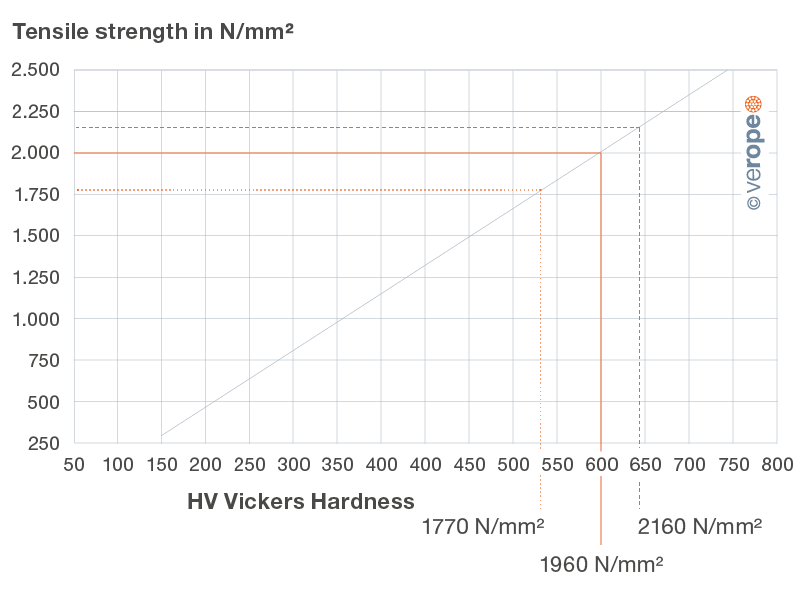Raw material
Wires are usually made from specified carbon steel. The carbon content is between 0,4% and 1%, the manganese content between 0,3% and 1%, the silicon content between 0,1% and 0,3% and the contents of phosphorus and sulphur each under 0,45%.
Wire surfaces
Galvanized wires are zinc coated by going through a bath of liquid zinc. The wire is called “finally galvanized“ if it does not get drawn further after this process. If the wire cross section is further reduced after this process, the wire is called “drawn galvanized“. Bright wires, uncoated, are indicated with the capital letter “U”, whereas zinc coated wires are divided into class “A” and class “B”, depending on the a zinc weigth coating.
Manufacturing process
Wire rod of 6 to 9mm diameter, the raw material, will be transformed to the desired strength, diameter or shape by rolling or drawing in a cold forming process.
Wire forms
A distinction is made between the wire shapes. A round wire is a wire with a round cross section. Every wire that has a non-round cross section is called a profiled wire. There are oval wires, flat wires, Z- and S-profiled wires, H-shaped wires, trapezoidal or wedge shaped wires and triangular wires. Profiled wires are produced by drawing or rolling processes.
Wire tensile strength
The tensile strength of a wire is defined as the maximum tensile force a wire can stand in longitudinal direction without breaking, divided by the cross section of the wire. The nominal tensile strength of a wire is a theoretical value, the actual tensile strength of the wire should not fall below the nominal tensile strength and should only exceed it in defined limits. Rope wires with the nominal tensile strengths of 1770 N/mm2, 1960 N/mm2 and 2160 N/mm2 are commonly used in modern wire ropes.


